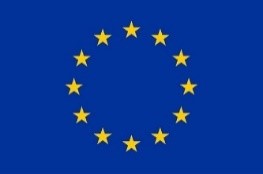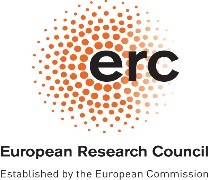Received:
2023-03-11 | Accepted:
2023-05-25 | Published:
2023-06-30
Title
The Karolinska Institute innovation ecosystem for cancer startups: lessons learned and best practices
Abstract
The Karolinska Institute's cancer startup innovation ecosystem is a dynamic network of stakeholders who collaborate to develop and commercialise innovative ideas and technologies in cancer research and treatment. This ecosystem has been successful in cultivating an environment of innovation and entrepreneurship, producing several successful startups in the cancer research and treatment space. This paper aims to provide a systematic review of the lessons learned and best practices from the Karolinska Institute innovation ecosystem for cancer startups. The review includes a comprehensive SWOT analysis , as well as insights from interviews with stakeholders from academia, industry, and government. The SWOT analysis identified several key strengths of the Karolinska Institute innovation ecosystem for cancer startups. The interview methodology for this study involved a semi-structured approach, with open questions designed to elicit detailed and nuanced responses from the participants. The Interviews and SWOT analysis identified several key of success of the Karolinska Institute innovation ecosystem for cancer startups is due to a number of key factors, including strong leadership, collaboration, funding mechanisms, supportive policies, and infrastructure. Effective leadership is required to guide the ecosystem and foster an innovation culture. Collaboration among stakeholders is critical for knowledge sharing, resource allocation, and coordination. Funding mechanisms and infrastructure are critical for supporting R&D activities and providing startups with the resources they need to grow and succeed. To protect and incentivize innovation, supportive policies such as intellectual property laws and regulatory frameworks are required. In addition, the paper discovered that incubation programmes are critical to the success of cancer startups in the Karolinska Institute innovation ecosystem. These programmes connect startups with resources, mentorship, and networks that are critical to their growth and development.
Keywords
Karolinska Institute, cancer startups, innovation ecosystem, SWOT analysis, incubation programmes
JEL classifications
O31
, O32
, O33
, O34
URI
http://jssidoi.org/ird/article/129
DOI
Pages
10-23
Funding
H2020, This project is co-funded by the European Union's Horizon 2020 Research and Innovation Programme under Reference N. H2020-MSCA-RISE-2017 GA778325
This is an open access issue and all published articles are licensed under a
Creative Commons Attribution 4.0 International License
References
Adner, R. (2006). Match your innovation strategy to your innovation ecosystem. Harvard Business Review, 84(4), 98.
Search via ReFindit
Baraldi, E., & Ingemansson Havenvid, M. (2016, April). Identifying new dimensions of business incubation: A multi-level analysis of Karolinska Institute’s incubation system. Technovation, (50–51), 53–68. https://doi.org/10.1016/j.technovation.2015.08.003
Search via ReFindit
Baraldi, E., Ingemansson, M., & Launberg, A. (2014,). Controlling the commercialisation of science across inter-organisational borders: Four cases from two major Swedish universities. Industrial Marketing Management, 43(3), 382–391. https://doi.org/10.1016/j.indmarman.2013.12.006
Search via ReFindit
Bergek, A., & Norrman, C. (2008, January). Incubator best practice: A framework. Technovation, 28(1–2), 20–28. https://doi.org/10.1016/j.technovation.2007.07.008
Search via ReFindit
Blevins, D., Farmer, M. S., Edlund, C., Sullivan, G., & Kirchner, J. E. (2010, October 14). Collaborative research between clinicians and researchers: a multiple case study of implementation. Implementation Science, 5(1). https://doi.org/10.1186/1748-5908-5-76
Search via ReFindit
Breschi, S., & Malerba, F. (1997). Sectoral innovation systems: technological regimes, Schumpeterian dynamics, and spatial boundaries. Systems of innovation: Technologies, institutions and organizations, 1, 130-156.
Search via ReFindit
Celis, J. E., & Pavalkis, D. (2017, November 9). A missionâ€oriented approach to cancer in Europe: a joint mission/vision 2030. Molecular Oncology, 11(12), 1661–1672. https://doi.org/10.1002/1878-0261.12143
Search via ReFindit
Chesbrough, H. (2003). Open innovation: The new imperative for creating and profiting from technology. Harvard Business Press.
Search via ReFindit
Cooke, P. (2001). Regional innovation systems, clusters, and the knowledge economy. Industrial and Corporate Change, 10(4), 945-974.
Search via ReFindit
de Vasconcelos Gomes, L. A., Facin, A. L. F., Salerno, M. S., & Ikenami, R. K. (2018). Unpacking the innovation ecosystem construct: Evolution, gaps and trends. Technological Forecasting and Social Change, 136, 30-48.
Search via ReFindit
Dutta, S., and Bilbao-Osorio, B. (2012). The global innovation index 2012: Stronger innovation linkages for global growth. INSEAD, Cornell University, and WIPO. https://www.globalinnovationindex.org/userfiles/file/GII-2012-Report.pdf
Search via ReFindit
Ehret, M., McDonald-Junor, D., & Smith, D. (2012, November). High Technology and Economic Development: The BioCity Nottingham Technology Incubator. The International Journal of Entrepreneurship and Innovation, 13(4), 301-309. https://doi.org/10.5367/ijei.2012.0095
Search via ReFindit
Erkko Autio, Llewellyn D.W. Thomas. (2014). Erkko Autio, Llewellyn D.W. Thomas. Innovation ecosystems: implications for innovation management. Mark Dodgson, David Gann, Nelson Phillips (Eds.), The Oxford Handbook of Innovation Management, Oxford University Press, Oxford (2014), pp. 204-288.
Search via ReFindit
Globocan 2020, Cancer Today - IARC, 150 Cours Albert Thomas, 69372 Lyon CEDEX 08, France - https://gco.iarc.fr/today/home
Search via ReFindit
Haleem, A., Javaid, M., Singh, R. P., & Suman, R. (2021). Telemedicine for healthcare: Capabilities, features, barriers, and applications. Sensors International, 2, 100117. https://doi.org/10.1016/j.sintl.2021.100117
Search via ReFindit
Incubator DRIVE - KI Innovations. (2022, June 2). KI Innovations. https://karolinskainnovations.ki.se/en/drive/
Search via ReFindit
Innovation financing. (2023). Karolinska Innovation, Innovation Financing, https://staff.ki.se/innovation-financing
Search via ReFindit
Kanavos, P., & Sullivan, R. (2010). The role of funding and policies on innovation in cancer drug development. Ecancermedicalscience. https://doi.org/10.3332/ecancer.2010.164
Search via ReFindit
Karolinska Development. (2023). Karolinska Development as an Investment | Karolinska Development. https://www.karolinskadevelopment.com/en/karolinska-investment
Search via ReFindit
KI Innovations. (2022). KI Innovations. https://karolinskainnovations.ki.se/en/
Search via ReFindit
Kihlander, I., & Gravenius, S. L. (2022, October). Karolinska University Hospital: Implementing an Innovation Management System at a University Hospital Providing Highly Specialised Care. Changing the Dynamics and Impact of Innovation Management, 157-175. https://doi.org/10.1142/9781800612105_0011
Search via ReFindit
Kumar, P., Dass, M., & Kumar, S. (2015). From competitive advantage to nodal advantage: Ecosystem structure and the new five forces that affect prosperity. Business Horizons, 58(4), 469–481. https://doi.org/10.1016/j.bushor.2015.04.001
Search via ReFindit
Lundvall, B. A. (1992). National Systems of Innovation: towards a Theory of Innovation and Interactive Learning, Pinter Publishers, London.
Search via ReFindit
Oakey, R. (2012, May 31). High-Technology Entrepreneurship.London, https://doi.org/10.4324/9780203120750
Search via ReFindit
Penberthy, L. T., Rivera, D. R., Lund, J. L., Bruno, M. A., & Meyer, A. (2021, December 29). An overview of realâ€world data sources for oncology and considerations for research. CA: A Cancer Journal for Clinicians, 72(3), 287–300. https://doi.org/10.3322/caac.21714
Search via ReFindit
QS World University Rankings. 2023. Top Universities. https://www.topuniversities.com/university-rankings/world-university-rankings/2023
Search via ReFindit
Risky business: the five biggest IP mistakes startups make. (2018). Risky Business: The Five Biggest IP Mistakes Startups Make. https://www.wipo.int/wipo_magazine/en/2018/04/article_0007.html
Search via ReFindit
Schwartz, M., & Hornych, C. (2008). Specialization as strategy for business incubators: An assessment of the Central German Multimedia Center. Technovation, 28(7), 436–449. https://doi.org/10.1016/j.technovation.2008.02.003
Search via ReFindit
Schwartz, M., & Hornych, C. (2010, September). Cooperation patterns of incubator firms and the impact of incubator specialization: Empirical evidence from Germany. Technovation, 30(9-10), 485-495. https://doi.org/10.1016/j.technovation.2010.05.001
Search via ReFindit
Sebastian, A. M., & Peter, D. (2022, November 28). Artificial Intelligence in Cancer Research: Trends. Challenges and Future Directions. Life, 12(12), 1991. https://doi.org/10.3390/life12121991
Search via ReFindit
Shinwari, Z. K., Tanveer, F., & Khalil, A. T. (2018). Ethical Issues Regarding CRISPR Mediated Genome Editing. Current Issues in Molecular Biology, 103–110. https://doi.org/10.21775/cimb.026.103
Search via ReFindit
Smith, D. J., & Zhang, M. (2012, November). Introduction: The Evolution of the Incubator Concept. The International Journal of Entrepreneurship and Innovation, 13(4), 227–234. https://doi.org/10.5367/ijei.2012.0096
Search via ReFindit
Statista . 2023. Sweden: average life expectancy by gender 2022. https://www.statista.com/statistics/523689/sweden-average-life-expectancy-at-birth-by-gender/
Search via ReFindit
Stone, R., & Frank, L. (2001, September 28). Karolinska Inc. Science, 293(5539), 2374-2376. https://doi.org/10.1126/science.293.5539.2374
Search via ReFindit
Swedish Cancer Society. (2023, May 17). Swedish Cancer Society Grants SEK 54.9 Million to KI Researchers | Karolinska Institutet Nyheter. https://news.ki.se/swedish-cancer-society-grants-sek-549-million-to-ki-researchers
Search via ReFindit
Torres Valdés, R.M., Lorenzo Ãlvarez, C., Castro Spila, J., & Santa Soriano, A. (2018). Relational university, learning and entrepreneurship ecosystems for sustainable tourism. Journal of Science and Technology Policy Management, 0(0) https://doi.org/10.1108/JSTPM-03-2018-0032
Search via ReFindit












 RSS 1.0
RSS 1.0